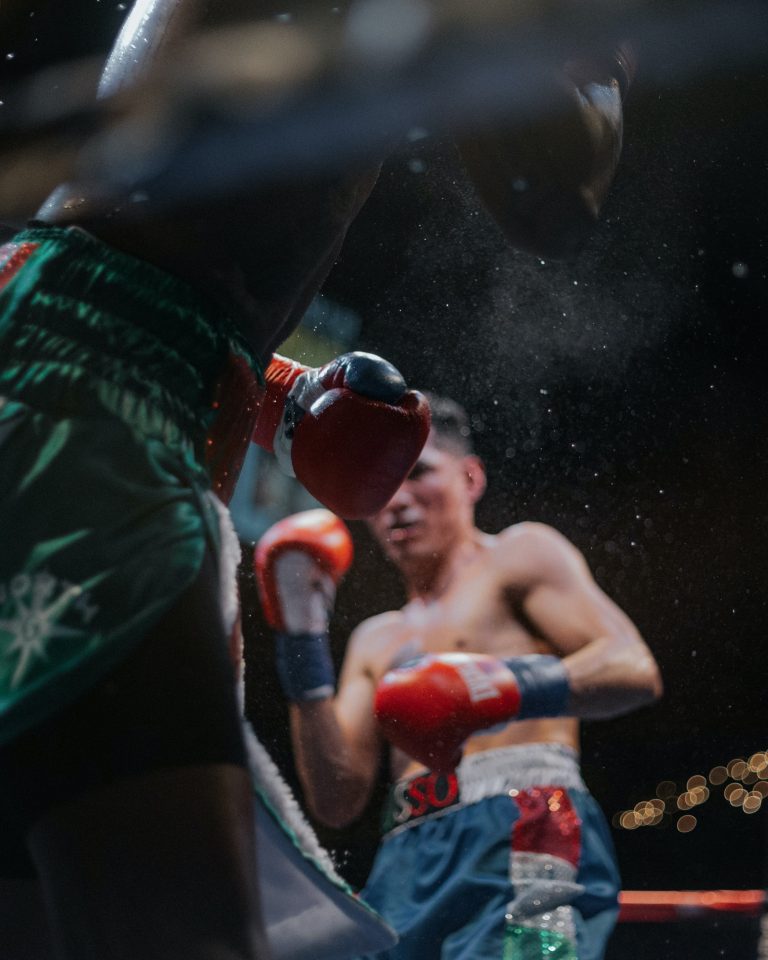How Many Color Karate Belts Are There?
When it comes to martial arts, Karate is one of the most popular disciplines in the world. It originated in Okinawa, Japan, and has since spread throughout the globe. Karate is a discipline that combines physical techniques, mental discipline, and spirituality.
One of the unique characteristics of Karate is the use of a belt system to indicate a student’s skill level. The belt system is a way to motivate students to continue practicing and advancing their skills. In this blog post, we will explore how many color Karate belts are there and what they represent.
The History of Karate Belt System
The belt system as we know it today was first introduced by Jigoro Kano, the founder of Judo. His idea was to use a ranking system to differentiate between students of different skill levels. The original belt system of Judo had only two colors: white and black.
The Karate belt system was developed to provide a more gradual progression from beginner to advanced levels. Gichin Funakoshi, the father of modern Karate, is credited with introducing the colored belts to Karate in the mid-20th century. His system consisted of three colors: white, brown, and black.
Today, the Karate belt system has expanded to include a variety of colors that represent different skill levels. While the number of colors may vary depending on the style of Karate, most systems use a similar range of colors.
The Color Karate Belts and Their Meanings
The traditional Karate belt system typically consists of the following colors in ascending order:
White Belt
The white belt is the starting point in Karate. It symbolizes a beginner’s level of skill and knowledge. Students with a white belt have little or no experience in Karate.
Yellow Belt
The yellow belt represents the first step in a student’s progress. It shows that the student has developed a basic understanding of the fundamental techniques and principles of Karate.
Orange Belt
The orange belt indicates that a student has improved their techniques and has begun to develop a deeper understanding of Karate. Students at this level are starting to gain confidence in their abilities.
Green Belt
The green belt signifies progress, growth, and maturity. It indicates that a student has developed more complex techniques and has a deeper understanding of Karate principles.
Blue Belt
The blue belt represents that a student has mastered the basic techniques and principles of Karate. They have developed a high level of skill and are ready to take on more advanced techniques.
Purple Belt
The purple belt is awarded to students who have shown an advanced level of skill and technical ability. It indicates that the student is approaching the level of expertise required to be nominated for black belt grading.
Brown Belt
The brown belt is the last step before the black belt. It symbolizes a high level of technical ability and maturity in Karate.
Black Belt
The black belt is the highest achievement in Karate. It represents mastery and expertise in the discipline. Students who achieve a black belt have dedicated many years to training and have demonstrated exceptional skill and knowledge.
The Variation in the Belt System
While the color Karate belt system outlined above is the most common, it is not universal. Different Karate styles or schools may use a slightly different range of colors. It is not uncommon to see variations such as grey, red, or even gold belts assigned to students of different skill levels.
How Many Color Karate Belts Are There?
The Basics of Karate Belts
Karate is a martial art form that originated in Okinawa, Japan. It has been practiced for centuries and has evolved over time. Karate belts are a way for practitioners to show their progress and rank within the discipline. Originally, there were no belts in karate, but today most styles use them.
What Are Karate Belts?
Karate belts are a system of colored belts that students of the martial art wear to denote their rank or level of expertise within their particular discipline. The system has been created to provide a way for students to progress through the ranks and to show their progress to others.
How Many Colors of Karate Belts Are There?
There are many different karate styles, and each style has its own ranking system, including the color of the belts. However, the most widely recognized system of karate belts is the one used by the Japan Karate Association (JKA). According to the JKA, there are ten traditional colors of karate belts as follows:
– White
– Yellow
– Orange
– Green
– Blue
– Purple
– Brown
– Red
– Black
– Dan (degrees of black belt)
Students typically begin with a white belt and progress through the ranks to reach the black belt, which traditionally represents mastery of the discipline. The Dan ranks denote levels of expertise within the black belt rank.
What Do the Different Colors of Belts Represent?
Each color of karate belt is associated with certain qualities, skills, and knowledge that a student must possess before moving on to the next level. Here is a brief overview of what each color belt represents:
– White Belt – The white belt represents the starting point in karate. It signifies purity, innocence, and the desire to learn.
– Yellow Belt – The yellow belt represents the first stage of learning. It indicates that the student has learned the fundamentals of karate and has begun to develop their skills.
– Orange Belt – The orange belt represents growth and strength. It signifies that the student is starting to develop more advanced techniques and has moved beyond the beginner stage.
– Green Belt – The green belt represents progress and maturity in the art of karate. The student has gained more experience and has begun to refine their techniques.
– Blue Belt – The blue belt represents the sky, which symbolizes the vastness of knowledge and the limits of human potential. The student has shown dedication to the art and is working towards mastery.
– Purple Belt – The purple belt is a sign of progress and power. It represents that the student has reached a level of proficiency in the art and is refining their skills.
– Brown Belt – The brown belt represents stability and discipline. The student has demonstrated a high level of proficiency in the art and is on the path to mastery.
– Red Belt – The red belt represents the sun rising. It signifies that the student has almost reached mastery and is one step away from attaining the highest level of expertise.
– Black Belt – The black belt is the ultimate goal of any karate student. It signifies mastery of the art and is the highest rank attainable. It represents a high level of dedication, discipline, and skill.
– Dan Ranks – The Dan ranks are degrees of black belt. They represent the student’s continued growth and development within the art, and higher Dan ranks require more advanced skills and knowledge.
How Many Color Karate Belts Are There: A Comprehensive Guide
Karate is a popular martial art that has been practiced for thousands of years. It requires patience, perseverance, and dedication to master the art. One of the ways to signify one’s progress in karate is through the use of colored belts. Each belt color represents a specific level of achievement, skill, and knowledge. In this article, we’ll answer the question, „How many color karate belts are there?“ and provide a detailed guide to help you understand the different belt colors and their significance.
Understanding the Belt System in Karate
In karate, the belt system represents a student’s level of knowledge and skill. The belt color signifies the student’s progress and achievement in the art. The belt system in karate is divided into two main categories: kyu ranks and dan ranks. Kyu ranks are student grades, while dan ranks are black belt grades.
The kyu ranks are further divided into various levels of belts, with each level represented by a different color. The number of belts and their corresponding colors may vary depending on the karate style and the school. However, there are usually eight to ten kyu ranks in karate, with each rank represented by a different color.
The Number of Color Karate Belts
The number of color karate belts can vary depending on the karate style and school. However, most karate schools follow a similar belt system that includes the following colored belts:
White Belt
The white belt is the starting point for all karate practitioners. It represents purity, innocence, and the beginning of the karate journey. As a white belt, the student is a beginner with little to no knowledge or skill in karate.
Yellow Belt
The yellow belt is the second rank in the kyu system. It represents the first step toward the student’s development in karate. The student has learned the basic techniques and is progressing in their training.
Orange Belt
The orange belt represents the next level of the student’s progress in karate. The student has mastered the basic techniques and is beginning to develop more advanced skills.
Green Belt
The green belt represents growth, a student’s physical and mental development in karate. The student has shown progress and has developed better techniques and more advanced skills.
Blue Belt
The blue belt represents the calmness of the sea, where the student has learned to be calm and composed during training. The student has developed more advanced techniques and skills, which make them a more formidable martial artist.
Purple Belt
The purple belt is the next step toward the dan ranks. The student has shown significant progress and has refined their techniques and skills.
Brown Belt
The brown belt represents the next level of the student’s development in karate. The student has become proficient in their techniques and has started teaching and mentoring other students.
Black Belt
The black belt is the highest rank in the martial art of karate. It represents mastery, knowledge, and skill. A black belt holder has achieved a high level of proficiency and has dedicated many years to the art.
The Importance of Karate Belts
The belt system in karate serves as a means of motivation and encouragement for students. It provides a visual representation of their progress, which encourages them to continue training and developing their skills. The colored belts also help the instructors and coaches to evaluate the student’s progress and determine their level of knowledge and skill.
Moreover, the belt system serves as a guide for the student’s development in karate. Each belt level signifies a specific set of skills and knowledge that the student should have acquired. This helps the student to focus on their development and to set achievable goals.
In Conclusion
Karate is a discipline that requires patience, discipline, and dedication. The belt system in karate serves as a visual representation of the student’s progress and achievements. While the number of color karate belts may vary depending on the karate style and school, the basic system includes eight to ten belts. Each belt level represents a specific set of skills and knowledge that the student should have acquired. The belt system provides motivation, encouragement, and helps the student to set achievable goals.
Inhaltsverzeichnis





